Allegra Harpootlian links gun violence at home to U.S. wars abroad.
By Allegra Harpootlian
TomDispatch.com
 In the wake of the Feb. 14, 2018, mass shooting at Marjory Stoneman Douglas High School in Parkland, Florida, which killed 17 students and staff members, a teacher said the school looked “like a war zone.” And to many young Americans, that’s exactly what it felt like. But this shooting was different. Refusing to be victims, Parkland survivors disrupted the “thoughts and prayers” cycle by immediately rallying student activists and adults across the country, mobilizing them around such tragedies and the weapons of war that often facilitate them.
In the wake of the Feb. 14, 2018, mass shooting at Marjory Stoneman Douglas High School in Parkland, Florida, which killed 17 students and staff members, a teacher said the school looked “like a war zone.” And to many young Americans, that’s exactly what it felt like. But this shooting was different. Refusing to be victims, Parkland survivors disrupted the “thoughts and prayers” cycle by immediately rallying student activists and adults across the country, mobilizing them around such tragedies and the weapons of war that often facilitate them.
Recent history suggested that such a movement, sure to be unable to keep the public’s attention or exert significant pressure on lawmakers, would collapse almost instantly. Yet, miraculously enough, the same fear — of their school being next — that had kept young Americans paralyzed for almost 20 years was what drove these newly impassioned activists not to back down.
Let me say that, much as I admire them, I look at their remarkable movement from an odd perspective. You see, I grew up in the “school-shooting era” and now work for a non-profit called ReThink Media tracking coverage of the American drone war that has been going on for 17 years.
To me, the U.S. military and CIA drones that hover constantly over eight countries across the Greater Middle East and Africa, and regularly terrorize, maim, and kill civilians, including children, are the equivalents of the disturbed shooters in American schools. But that story is hard to find anywhere in this country. What reports Americans do read about those drone strikes usually focus on successes (a major terrorist taken out in a distant land), not the “collateral damage.”
With that in mind, let me return to those teenage activists against gun violence who quickly grasped three crucial things. The first was that such violence can’t be dealt with by focusing on gun control alone. You also have to confront the other endemic problems exacerbating the gun violence epidemic, including inadequate mental health resources, systemic racism and police brutality, and the depth of economic inequality. As Parkland teen organizer Edna Chavez explained, “Instead of police officers we should have a department specializing in restorative justice. We need to tackle the root causes of the issues we face and come to an understanding of how to resolve them.”
The second was that, no matter how much you shouted, you had to be aware of the privilege of being heard. In other words, when you shouted, you had to do so not just for yourself but for all those voices so regularly drowned out in this country. After all, black Americans represent the majority of gun homicide victims. Black children are 10 times as likely to die by gun and yet their activism on the subject has been largely demonized or overlooked even as support for the Marjory Stoneman Douglas students rolled in.
The third was that apathy is the enemy of progress, which means that to make change you have to give people a sense of engagement and empowerment. As one of the Parkland students, Emma Gonzalez, put it: “What matters is that the majority of American people have become complacent in a senseless injustice that occurs all around them.”
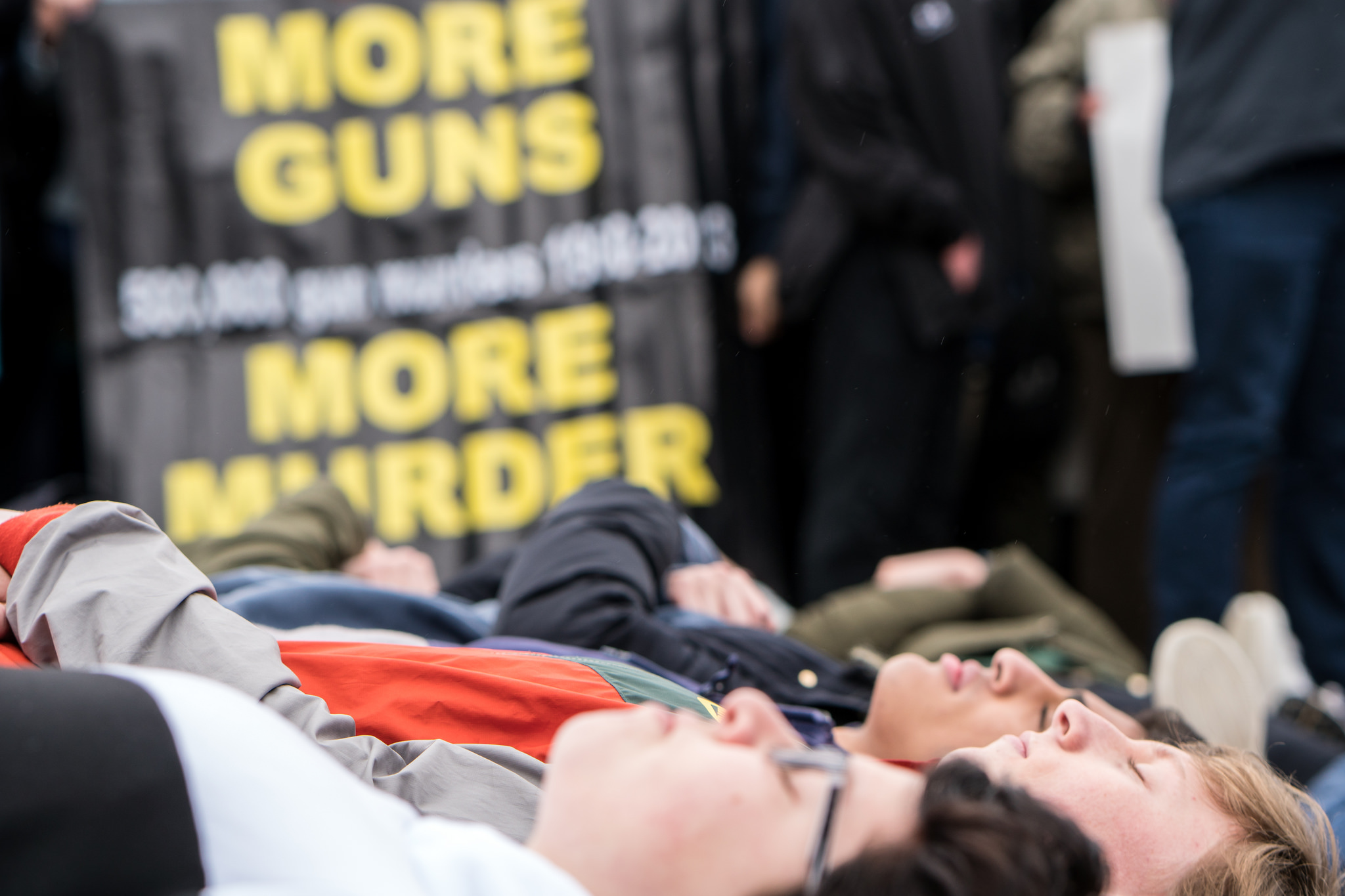
Die-in demonstration in February 2018 in Washington, D.C., organized by Teens For Gun Reform in wake of Marjory Stoneman Douglas High School shootings in Parkland, Florida. (Lorie Shaull via Flickr)
Washington’s Expanding Drone Wars
Here’s the irony, though: while those teenagers continue to talk about the repeated killing of innocents in this country, their broader message could easily be applied to another type of violence that, in all these years, Americans have paid next to no attention to: the U.S. drone war.
Unlike school shootings, drone strikes killing civilians in distant lands rarely make the news here, much less the headlines. Most of us at least now know what it means to live in a country where school shootings are an almost weekly news story. Drones are another matter entirely, and beyond the innocents they so regularly slaughter, there are long-term effects on the communities they are attacking.
As Veterans for Peace put it, “Here at home, deaths of students and others killed in mass shootings and gun violence, including suicide gun deaths, are said to be the price of freedom to bear arms. Civilian casualties in war are written off as ‘collateral damage,’ the price of freedom and U.S. security.”
And yet, after 17 years, three presidents, and little transparency, America’s drone wars have never truly made it into the national conversation. Regularly marketed over those years as “precise” and “surgical,” drones have always been seen by lawmakers as a “sexy,” casualty-free solution to fighting the bad guys, while protecting American blood and treasure.
According to reports, President Donald Trump actually expanded the U.S. global drone war, while removing the last shreds of transparency about what those drones are doing — and even who’s launching them. One of his first orders on entering the Oval Office was to secretly reinstate the CIA’s ability to launch drone strikes that are, in most cases, not even officially acknowledged. And since then, it’s only gotten worse. Just last week, he revoked an Obama-era executive order that required the director of national intelligence to release an annual report on civilian and combatant casualties caused by CIA drones and other lethal operations. Now, not only are the rules of engagement — whom you can strike and under what circumstances— secret, but the Pentagon no longer even reveals when drones have been used, no less when civilians die from them. Because of this purposeful opaqueness, even an estimate of the drone death toll no longer exists.
Still, in the data available on all U.S. airstrikes since Trump was elected, an alarming trend is discernible: there are more of them, more casualties from them, and ever less accountability about them. In Iraq and Syria alone, the monitoring group Airwars believes that the U.S.-led coalition against ISIS is responsible for between 7,468 and 11,841 civilian deaths, around 2,000 of whom were children. (The U.S.-led coalition, however, only admits to killing 1,139 civilians.)
In Afghanistan, the U.N. recently found that U.S. airstrikes (including drone strikes) had killed approximately the same number of Afghan civilians in 2018 as in the previous three years put together. In response to this report, the U.S.-led NATO mission there claimed that “all feasible precautions” were being taken to limit civilian casualties and that it investigates all allegations of their occurrence. According to such NATO investigations, airstrikes by foreign forces caused 117 civilian casualties last year, including 62 deaths — about a fifth of the U.N. tally.
And those are only the numbers for places where Washington is officially at war. In Yemen, Somalia, Pakistan, and Libya, even less information is available on the number of civilians the U.S. has killed. Experts who track drone strikes in such gray areas of conflict, however, place that number in the thousands, though there is no way to confirm them, as even our military acknowledges. U.S. Army Colonel Thomas Veale, a spokesman for the U.S.-led coalition against ISIS, put it this way last year: “As far as how do we know how many civilians were killed, I am just being honest, no one will ever know. Anyone who claims they will know is lying, and there’s no possible way.”
After a U.S. strike killed or injured an entire Afghan family, the trauma surgeon treating a 4-year-old survivor told NBC, “I am sad. A young boy with such big injuries. No eyes, brain out. What will be his future?”
In other words, while America’s teenagers fight in the most public way possible for their right to live, a world away Afghanistan’s teenagers are marching for the same thing — except instead of gun control, in that heavily armed land, they want peace.

U.S. Marine Corps AV-8B Harrier taking off during air strikes against Daesh targets in Libya. (Wikimedia)
Trauma Is Trauma Is Trauma
Gun violence — and school shootings in particular — have become the preeminent fear of American teenagers. A Pew poll taken last year found that 57 percent of teens are worried about a shooting at their school (1-in-4 are “very worried.”) This is even truer of nonwhite teens, with roughly two-thirds of them expressing such fear.
As one student told Teen Vogue: “How could you not feel a little bit terrified knowing that it happens so randomly and so often?” And she’s not exaggerating. More than 150,000 students in the U.S have experienced a shooting on campus since the 1999 Columbine High School massacre, considered the first modern mass school shooting.
And in such anticipatory anxiety, American students have much in common with victims of drone warfare. Speaking to researchers from Stanford University, Haroon Quddoos, a Pakistani taxi driver who survived two U.S. drone strikes, explained it this way:
“No matter what we are doing, that fear is always inculcated in us. Because whether we are driving a car, or we are working on a farm, or we are sitting home playing… cards — no matter what we are doing, we are always thinking the drone will strike us. So we are scared to do anything, no matter what.”
Similar symptoms of post-traumatic stress, trauma, and anxiety are commonplace emotions in countries where U.S. drones are active, just as in American communities like Parkland that have lived through a mass shooting. Visiting communities in Yemen that experienced drone strikes, forensic psychologist Peter Schaapveld found that 92 percent of their inhabitants were suffering from post-traumatic stress disorder, with children the most significantly affected. Psychologists have come up with similar figures when studying both survivors of school shootings and children who have been psychologically affected by school-lockdown drills, by the media’s focus on violence, and by the culture of fear that has developed in response to mass shootings.
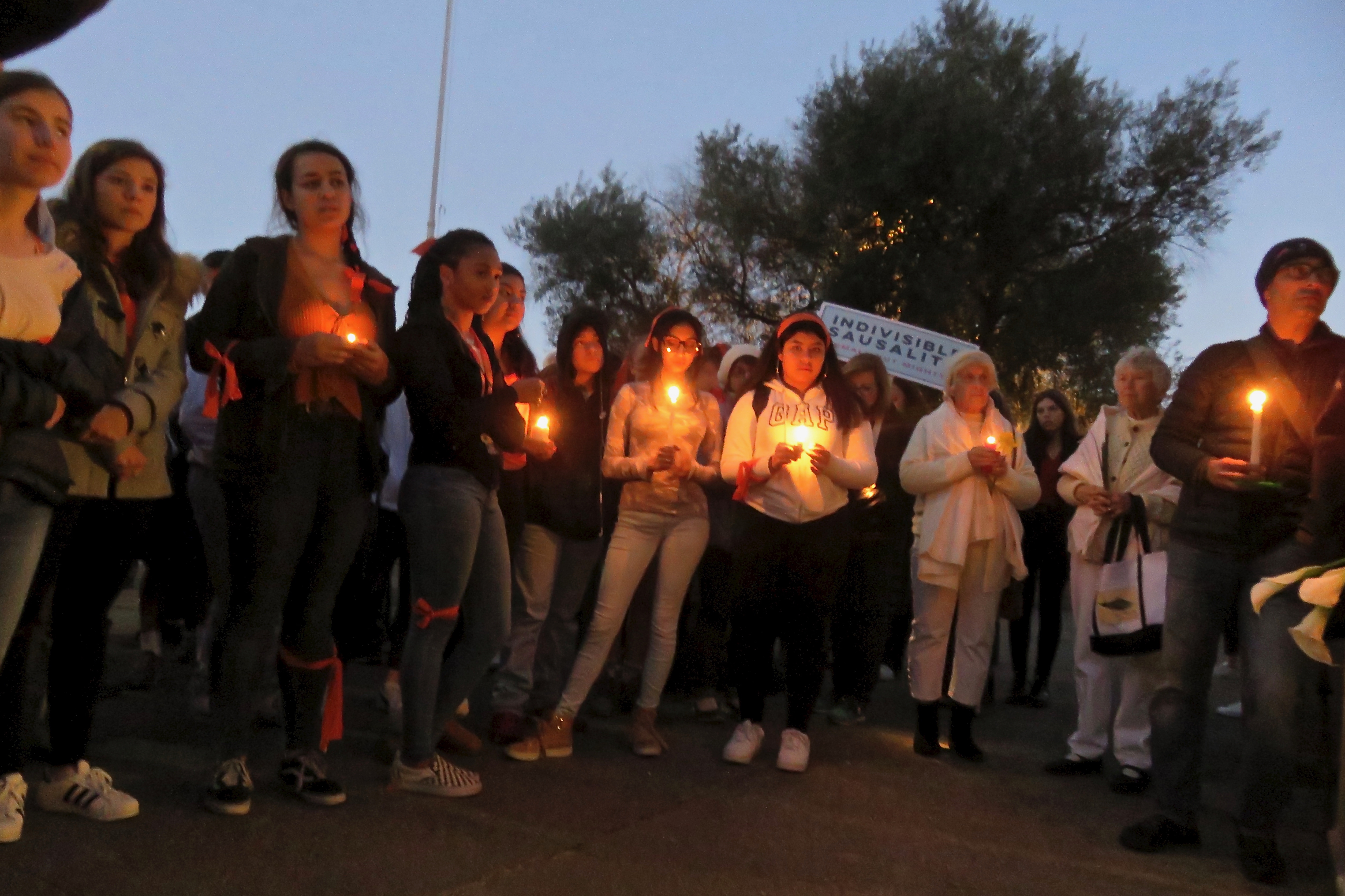
Teens in Mill Valley, California, hold vigil on Feb. 15, 2018, for teens killed in the school shooting in Parkland, Florida. (Fabrice Florin via Flickr)
Voices Left Out
The Parkland students have created a coherent movement that brings together an incredibly diverse group united around a common goal and a belief that all gun violence victims, not just those who have experienced a mass shooting, need to be heard. As one Parkland survivor and leader of the March For Our Lives movement, David Hogg, put it, the goal isn’t to talk for different communities, but to let them “speak for themselves and ask them how we can help.”
The Parkland survivors have essentially created an echo chamber, amplifying the previously unheard voices of young African-Americans and Latinos in particular. At last year’s March For Our Lives, for instance, 11-year-old Naomi Wadler started her speech this way: “I am here today to acknowledge and represent the African-American girls whose stories don’t make the front page of every national newspaper, whose stories don’t lead the evening news.”
In 2016, there were nearly 39,000 gun deaths, more than 14,000 of them homicides and almost 23,000 suicides. Such routine gun violence disproportionately affects black Americans. Mass shootings accounted for only about 1.2 percent of all gun deaths that year. Yet the Parkland students made headlines and gained praise for their activism — Oprah Winfrey even donated $500,000 to the movement — while black communities that had been fighting gun violence for years never received anything similar.
As someone who spends a lot of her time engrossed in the undercovered news of drone strikes, I can’t help but notice the parallels. Stories about U.S. drone strikes taking out dangerous terrorists proliferate, while reports on U.S.-caused civilian casualties disappear into the void. For example, in January, a spokesman for U.S. Central Command claimed that a precision drone strike finally killed Jamel Ahmed Mohammed Ali al-Badawi, the alleged mastermind behind the deadly October 2000 suicide bombing of the USS Cole in Yemen. Within a day, more than 24 media outlets had covered the story.
Few, however, focused on the fact that the U.S. command only claimed al-Badawi’s death was “likely,” despite similar reports about such terrorists that have repeatedly been proven wrong. The British human rights group Reprieve found back in 2014 that even when drone operators end up successfully targeting specific individuals like al-Badawi, they regularly kill vastly more people than their chosen targets. Attempts to kill 41 terror figures, Reprieve reported, resulted in the deaths of an estimated 1,147 people. That was five years ago, but there’s no reason to believe anything has changed.
By contrast, when a U.S. airstrike — it’s not clear whether it was a drone or a manned aircraft — killed at least 20 civilians in Helmand Province, Afghanistan, in December 2018, only four American media outlets (Reuters, the Associated Press, Voice of America, and The New York Times) covered the story and none followed up with a report on those civilians and their families. That has largely been the norm since the war on terror began with the invasion of Afghanistan in October 2001. In the Trump years so far, while headlines scream about mass school shootings and other slaughters of civilians here, the civilian casualties of America’s wars and the drone strikes that often go with them are, if anything, even more strikingly missing in action in the media.
When Safa al-Ahmad, a journalist for PBS’s Frontline, was asked why she thought it was important to hear from Yemenis experiencing American drone strikes, she responded:
“I think if you’re going to talk about people, you should go talk to them. It’s just basic respect for other human beings. It really bothered me that everyone was just talking about the Americans… The other civilians, they weren’t given any names, they weren’t given any details. It was like an aside to the story… This is part of the struggle when you construct stories on foreign countries, when it comes to the American public. I think we’ve done [Americans] a disservice, by not doing more of this… We impact the world, we should understand it. An informed public is the only way there can be a functioning democracy. That is our duty as a democracy, to be informed.”
This one-sided view of America’s never-ending air wars fails everyone, from the people being asked to carry out Washington’s decisions in those lands to ordinary Americans who have little idea what’s being done in their name to the many people living under those drones. Americans should know that, to them, it’s we who seem like the school shooters of the planet.
Waking Up an Apathetic Nation
For the better part of two decades, young Americans have been trapped in a cycle of violence at home and abroad with little way to speak out. Gun violence in this country was a headline-grabbing given. School shootings, like so many other mass killings here, were deemed “tragic” and worthy of thoughts, prayers, and much fervid media attention, but little else.
Until Parkland.
What changed? Well, a new cohort, Generation Z, came on the scene and, unlike their millennial predecessors, many of them are refusing to accept the status quo, especially when it comes to issues like gun violence.
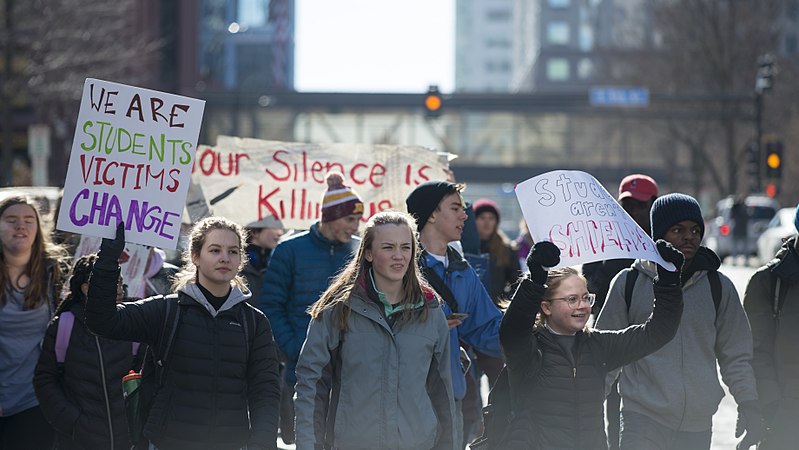
High school students marching against gun violence in Minneapolis, Feb. 21, 2018. (Fibonacci Blue via Creative Commons)
Every time there was a mass shooting, millennials would hold their breath, wondering if today would be the day the country finally woke up. After Newtown. After San Bernadino. After Las Vegas. And each time, it wasn’t. Parkland could have been the same, if it hadn’t been for those meddling kids. Having witnessed the dangers of apathy, Gen-Z seems increasingly to be about movement and action. In fact, in a Vice youth survey, 71 percent of respondents reported feeling “capable” of enacting change around global warming and 85 percent felt the same about social problems. And that’s new.
For so long, gun violence seemed like an unstoppable, incurable plague. Fed up with the “adults in the room,” however, these young activists have begun to take matters into their own hands, giving those particularly at risk of gun violence, children, a sense of newfound power — the power to determine their own futures. Whether it’s testifying in front of Congress in the first hearing on gun violence since 2011, protesting at the stores and offices of gun manufacturers, or participating in “die-ins,” these kids are making their voices heard.
Since the Parkland massacre, there has been actual movement on gun control, something that America has not seen for a long time. Under pressure, the Justice Department moved to ban the bump stocks that can make semi-automatic weapons fire almost like machine guns, Florida signed a $400 million bill to tighten the state’s gun laws, companies began to cut ties with the National Rifle Association, and public support grew for stricter gun control laws.
Although the new Gen Z activists have focused on issues close to home, sooner or later they may start to look beyond the water’s edge and find themselves in touch with their counterparts across the globe, who are showing every day how dedicated they are to changing the world they live in, with or without anyone’s help. And if they do, they will find that, in its endless wars, America has been the true school shooter on this planet, terrorizing the global classroom with a remarkable lack of consequences.
In March 2018, according to Human Rights Watch, American planes bombed a school that housed displaced people in Syria, killing dozens of them, including children. Similarly, in Yemen that August, a Saudi plane, using a Pentagon-supplied laser-guided bomb, blew away a school bus, killing 40 schoolchildren. Just as at home, it’s not only about the weaponry like those planes or drones. Activists will find that they have to focus their attention as well on the root causes of such violence and the scars they leave behind in the communities of survivors.
More tolerant, more diverse, less trustful of major institutions and less inclined to believe in American exceptionalism than any generation before them, Generation Z may be primed to care about what their country is doing in their name from Afghanistan to Syria, Yemen to Libya. But first they have to know it’s happening.
Allegra Harpootlian is a media associate at ReThink Media, where she works with leading experts and organizations at the intersection of national security, politics, and the media. She principally focuses on U.S. drone policies and related use-of-force issues. She is also a political partner with the Truman National Security Project. Find her on Twitter @ally_harp.


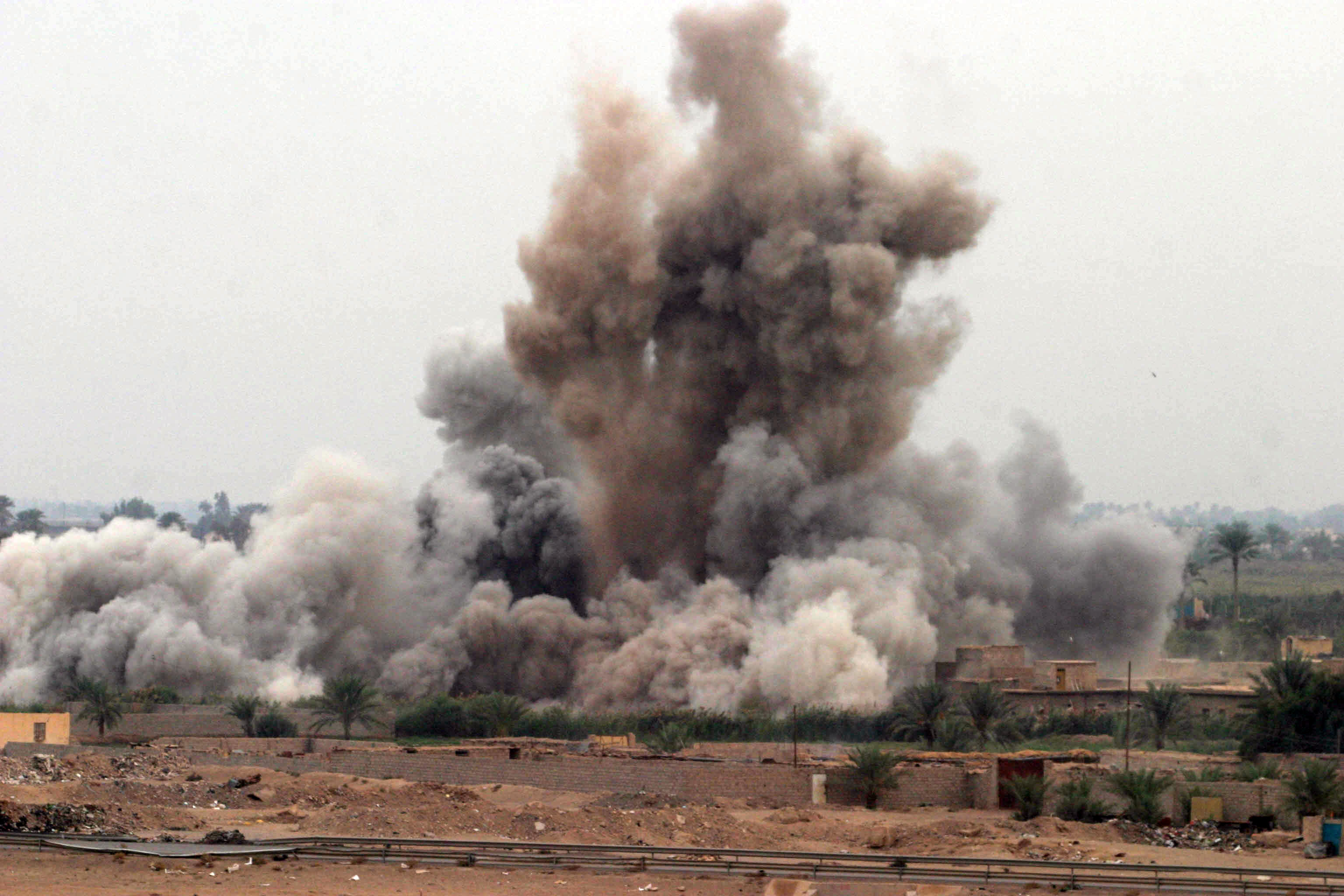
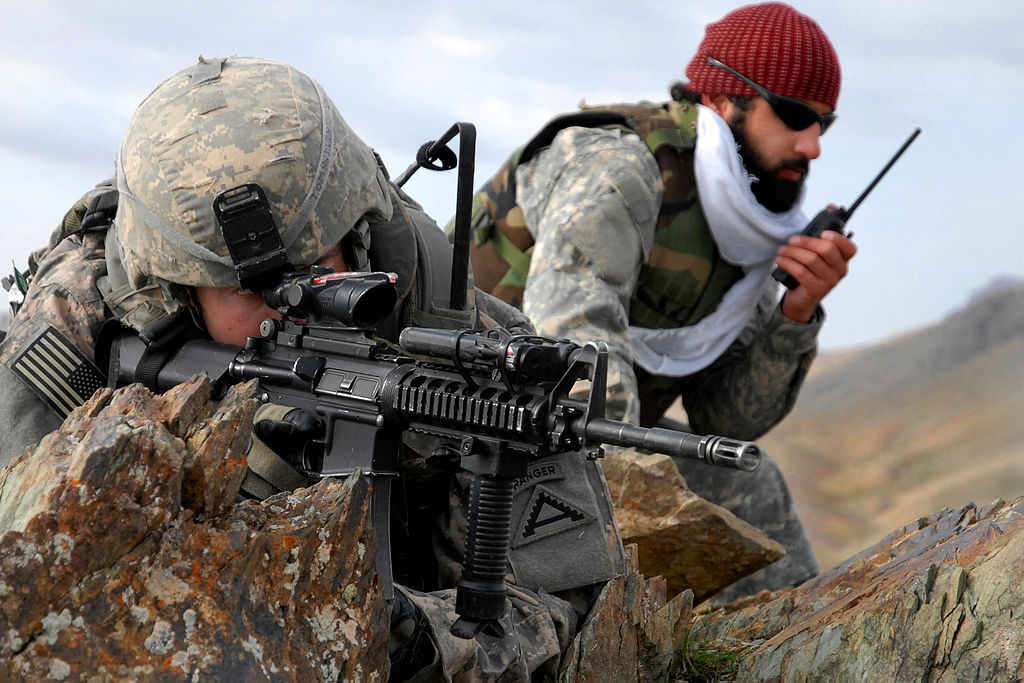
“Most victims of gun violence are black”…….
By far most perpetrators of all violent crime are black. You have an upside down point of view.
In 2005, the Protection of Lawful Commerce in Arms Act was signed by President George W. Bush to prevent gun manufacturers from being named in federal or state civil suits by those who were victims of crimes involving guns made by that company.
https://www.law.cornell.edu/uscode/text/15/chapter-105#tab_default_1
Feb 23, 2018 How the Nazis Used Gun Control
It’s important that we know our history so that we don’t make the same mistakes as previous generations.
https://youtu.be/t7Ae2oGm57Y
this is ridiculous!! where is parental accountability??? everyone wants to blame systemic issues, or the police or white people. its a break down of the family, fathers not being held accountable to fatherhood. kids being seen as a chore, something to get to later after “I’ve done what I want to do, after I’ve achieved my dream of becoming some impractical unrealistic whatever.” You mention that black people are majority of victims of gun violence? Gang members are majority of gun violence perpetrators! Mostly illegal gun violence that no regulation or gun control law would ever prevent. Legal gun ownership prevents over 100,000 violent crimes each year in America. you want equality. A gun makes a woman equal to a man. As a woman the only realistic way of protecting myself against a rapist is with my .22 pistol. And gun control fanatics want to take that away for me in the name of equality. That doesn’t make any sense. There will always be psychos who want to harm others, and they will by any means they can.
Why do senators and politicians and celebrities and government officials and billionaires get to protect themselves with armed bodyguards but the average law abiding citizen shouldn’t have that right? Why do we protect banks with armed security but our children don’t get that right?
only responding to the gun control issues. yes the US government, along with all other governments, is corrupt and should do a hell of a lot better at minimizing causalities. I agree with you on that.
What Father should be held accountable for drone strikes? Violence always begets violence. Hatred is actually more widely accepted than most want to admit. Lastly death is a highly profitable business it is what keeps so many Americans employed.
An awful lot of words to state that America is a bloodthirsty construct. Founded on genocide, at war for something like 92% of it’s existence, and a love for the gun found nowhere else in the world, it is little wonder that yanks exorcise their angst with bloodshed. It is part of their psyche.
It isn’t the drones. It isn’t the guns. It’s the mentality. Further, violent video games aren’t the cause of real-time violence, they are a by-product of it. Bloodsport is an American pasttime. It is packaged and marketed as is any other commodity. Wanna see somebody get the crap beat out of them? UFC is the place to be. Wanna be a man? Go shoot a big-horn something, take selfies, and rejoice in the gore.
Violence has always been the American way. As American as apple pie, you might say.
Somewhat tangential to thesis, but I have to wonder when gov’t or others begin to use even the private drones for violent strikes away from war zones.
When, after one of these horrible school shootings, Obama had photogenically and publicly shed some tears, and for which he was broadly admired, I had to puke in disgust. And that is because he at the same time drone killing Yemeni children.
FYI —–
Cecil Rhodes, for whom the prestigious Rhodes Scholarship to Oxford was founded (with money made from exploiting resources from South Africa) believed openly in white supremacy. He once said, “Africa is still lying ready for us, it is our duty to take it. It is our duty to seize every opportunity of acquiring more territory . . . more territory simply means more of the Anglo-Saxon race, more of the best, the most human, most honorable race the world possesses.” As prime minister of the Cape Colony, one of the colonies that later joined to become South Africa, Rhodes pushed through the Glen Grey Act in 1894, forcing Africans into native reserves and into the migrant wage labor market; the act is seen as the foundation to South African apartheid. Like Wilson, Rhodes believed in keeping blacks and whites separate, saying, “At any rate, if the whites maintain their position as the supreme race, the day may come when we shall all be thankful that we have the natives in their proper place.”
The screenshot of the NZ shooter exactly replicates the video game that 85% of male mid schoolers are addicted to in the school at which I tutor. I may be the only staff member who forbids students to play this “practice mass murder video game”.
Article is echo chamber of biased reports. Gun control advocates need first to get guns out of their own homes-including violent, largely unmonitored in most homes. A Big driver of mental illness and school shootings is video gaming, originally employed by the Army to desensitize -big tech counters legitimate studies but legit studies exist and are worthy of examination – tech addictions temporarily alter the brain – get away from all digital gaming for a month (for % who are badly affected) the brain begins to heal.
The writer of this article clearly shows much bias and anti conservative slant, as opposed to wanting to find “truth” the thing I respect about ConsortiumNews.
The writer quotes no unbiased sources.
A quick review shows that AP and the Royal United Services Institute are reporting China is a big driver in sales of armed UAV “drones” to the Mideast because U.S. policy forbids the sale. How do her sources determine whose armed drones are the killers? Beyond that, simply echoing is not ConsortiumNews strength. Where are verifiable facts?
If all you see is the American MSM, the odds are you won’t learn anything. The MSM is largely just a megaphone for US government propaganda. They aren’t going to tell you anything that will disturb the official government line. If you want to start to understand what’s happening, I’d recommend A Distant Mirror by Barbara Tuchman. It tells quite a fascinating tale of 13th century Picardy with very good coverage of the impact of men returning from the Crusades and the consequences of said battle hardened men returning.
I came to this conclusion after the Iraq war against Saddam’s “wed”. Ever since, I have been boycotting the western corporate media, including BBC and NPR, utterly and completely. I have no idea why anybody who does not have a “professional” reason to know what these corporate presstitutes spew, still watches/reads/listens to this propaganda.
Jeff, I agree. In A Distant Mirror, Barbara Tuchman describes warfare and life in 13th century France from the perspective of the common people. Clinical. Far from glorious, very disturbing. How about all of those opportunistic street people that tagged along on the first crusade? I have studied that era, but Tuchman’s take on it stands out like a monolith.
Perhaps someday we can learn from our history
A Distant Mirror indeed
Trump is the dictator de jour of the Fascist State of America. Ordering hits on his enemies comes naturally. Trump is not the main problem, the government of America is the problem.
Trump is a distraction and the latest “wedge issue”.
Trump is a distraction (and part of the symptom). He is not the cause.
Remember Obama. He was smarter and didn’t call countries $h** Holes. Rather he bombed and droned them make to make them $h** Holes. For that he was proclaimed as the non-dictatorial, peace president. BTW, Obama had given the bipartisan stamp of approval on almost everything that Bush the lesser had done illegally (illegal droning, blanket spying on Americans, etc.).
Let’s look at the problem objectively, instead of suffering from TDS (Trump derangement syndrome).
I think it much more likely that TV and films are the real influence as far as gun culture goes. There is rarely any kind of film on TV and screen that doesn’t have a man (sometimes a woman) with a gun in their hand screaming at some supposed enemy. It seems to me that no film or TV film is complete without explosions, guns, helicopters blowing things up and the glorification of mindless violence. Over here in the UK we have a relatively new TV channel called ‘talking pictures’ which features films from the 1950’s and 60’s Whilst some of them are on the violent side, most of them are relatively violence free with hardly any guns, things being blown up etc and are a breath of fresh air, even though many of them are in black and white.
“Allegra Harpootlian links gun violence at home to U.S. wars abroad.”
Although some specifics are in the mixes in terms of velocities, tools and trajectories, perhaps a more illuminating/inclusive root/start point would be competitive/coercive social relations where fears and violent modes of action/response are endemic and increasing, including but not limited to the self-designated “The United States of America” and “The United Kingdom.”
The USA’s promotion that it is moral to slaughter millions of non-threatening named enemies abroad; analogously condones the slaughter of dozens domestically.
“The USA’s promotion….”
Understandably as a function of their experience and/or perspective some perceive a component part/moment in a process and conflate that moment with a process with the process in denial of time and process.
In addition belief is a tool in restricting perception of process.
Other tools used in restricting perception of process include but are not limited to misrepresenting the studies of Mr. Pavlov and Mr. Milgram shared in minor detail in another thread/pathway through this portal to afford others opportunities to test hypotheses if so minded.
Consequently some are immersed in the opponents’ linear paradigm of pondering “what is” – in illustration of Mr. Rove’s observation “We are an empire, we create our own reality to which others react” thereby being complicit in the re-enforcement
of their own spectatorship and restriction of agency.
Some practitioners therefore ponder “how to” illuminated by specific purpose and have the facility to formulate and test their hypotheses through implentation embracing doubt and avoiding belief given that omniscience is precluded in any interactive system.
Some practitioners are not immersed in ideological constructs such as “USA” but as a function of rigour refer to “the temporary social relations presently self-described as The United States of America”, or previous to 1991 in respect of “The Soviet Union”, to “the temporary social relations presently self-described as The Soviet Union” since this was never The, or Soviet, or a Union.
Some practitioners also share hypotheses to afford others opportunities to also test them if so minded.
A small illustration of this is outlined below :
“OlyaPola
March 16, 2019 at 11:12 am
“Fed up with the “adults in the room,”……………………………………..”
I suggest that:
“James Clooney
March 16, 2019 at 10:16 am”
is an understandable restriction of perception of process.
However the comment does in some assay perceive that the restriction of process is “cultural” and achieves some assay of transcendence of one of the opponents’ practices/paradigms by not resorting to “human nature” in emulation of practices of seeking to bridge doubt by belief to attain comfort/confirmation.
However there may be implicit immersions in other of the opponents’ paradigms such as resort to binaries including win/lose, and belief/hope that the temporary social relationships presently self-described as The United States of America can be reformed the testing of which may deflect/delay lateral processes, rendering the testers waiting for Godot.
Some practitioners have/are formulating/implementing strategies to encourage/facilitate transcendence of the opponents’ social relationship and are consequently are perceived by the opponents to be an existential threat – that was the evangelised narrative of the opponents but not the informed practice of the opponents during the currency of the temporary social relations self-described as The Soviet Union – but has become both the evangelised narrative and informed practice of the opponents in respect of the temporary social relations presently self-described as The Russian Federation.
Perhaps the above will aid illumination of the naivete of Mr. Cohen and others by sermons such as “Why can’t we be all friends?” or the avowed “purpose” of the Floridian Baker/Saker in “Stop the Empire’s War on Russia”.
Thank you for your contribution to the petri-dish.
“Fed up with the “adults in the room,” however, these young activists have begun to take matters into their own hands, giving those particularly at risk of gun violence, children, a sense of newfound power — the power to determine their own futures.”
“perhaps a more illuminating/inclusive root/start point would be competitive/coercive social relations where fears and violent modes of action/response are endemic and increasing, including but not limited to the self-designated “The United States of America” and “The United Kingdom.”
Iterations within the opponents’ linear paradigms facilitates opportunities to perceive the opponents’ paradigms – higher assays of “transparency” including “We the people hold these truths to be self-evident” preclude perception whilst higher assays of opacity including doubt facilitate perception, whilst further iteration is facilitated by emulating any practices within the opponents’ paradigms.
One of the most prevalent emulations is based on the notion of cutting Gordian knots as “problem-solving” a practice within which the opponents’ “culture” is saturated.
The lateral transcendent practice is to unpick Gordian knots in cooperation with others, since “begun to take matters into their own hands” is a practice in emulation of the opponents’ paradigm of “individualism”.
In illustration of the above.
https://www.truthdig.com/articles/death-penalty-debate-takes-a-turn-toward-sanity/
There are a number of connections between American gun violence and its wars abroad.
But I’ve taken the view for a while that the violence at home provides the perfect early training ground for future killers to be sent abroad.
https://chuckmanwordsincomments.wordpress.com/2018/02/23/john-chuckman-comment-americas-fun-with-guns-is-nursery-school-for-the-killers-sent-abroad-its-unpatriotic-to-whine-over-some-collateral-damage-at-home-why-i-support-trumps-brainless-propos/
US Military raining death upon Muslim civilians in Muslim lands,
FORCE the human exodus of Arabs into Caucasian Extremist / Terrorist Anti-Muslim Brutality and Death.
Caucasian Nationalistic Imperialism has forever been Inhuman, Barbaric, Uncivilized and Atrociously Apathetic.
“WE, THE ANGLO SAXONS,ARE THE FIRST RACE IN THE WORLD, AND THE MORE OF THE WORLD WE INHERIT, THE BETTER IT IS FOR THE HUMAN RACE.” —— CECIL RHODES
https://www.asiatimes.com/2019/03/article/new-zealand-massacre-points-to-rightwing-extremists/
Inheritance by genocide.
“Inheritance by genocide.”
Words are not only catalysts of connotations but simultaneously limiters of focus/perception.
Perhaps a more illuminating/inclusive formulation would read “Inheritance by death” as a description/faciltator of the scope of certain types of social relations, including how death is a pre-requisite for the continuation of these certain types of social relations not restricted to methods such as “genocide”.
Some are of the view that “Capitalism” is a death cult the variables within which are the trajectories and velocities of death.
Anglo-Saxon Nationalistic Imperialism, more like it, although other forms of Nationalistic Imperialism (French, Dutch, Belgian, and even Japanese (despite not being Caucasian)) are not to be ignored. Not much attention is given to those, however, since those same countries, and then some, have since become vassal states of the US. What doesn’t help is that:
1. all the Five Eyes nations are Anglo-Saxon,
2. international aviation (save for Russia and China) expresses altitude in feet (my own feet are nowhere near 30 cm in length), and
3. English, with its lack of grammatical gender and inconsistent spelling, has become the international language even in countries that have never been colonies of Britain or the US.
It’s rather rich for Rhodes to claim superiority of Anglo-Saxonism (if that’s even a word) considering the original Anglo-Saxons came from what is now part of Germany, hence English is listed as a Germanic language despite much of its vocabulary coming from Latin and its derivatives (French being one of them). It’s also difficult to claim racial superiority when you and 7½ billion others are descendants of Adam and Eve.